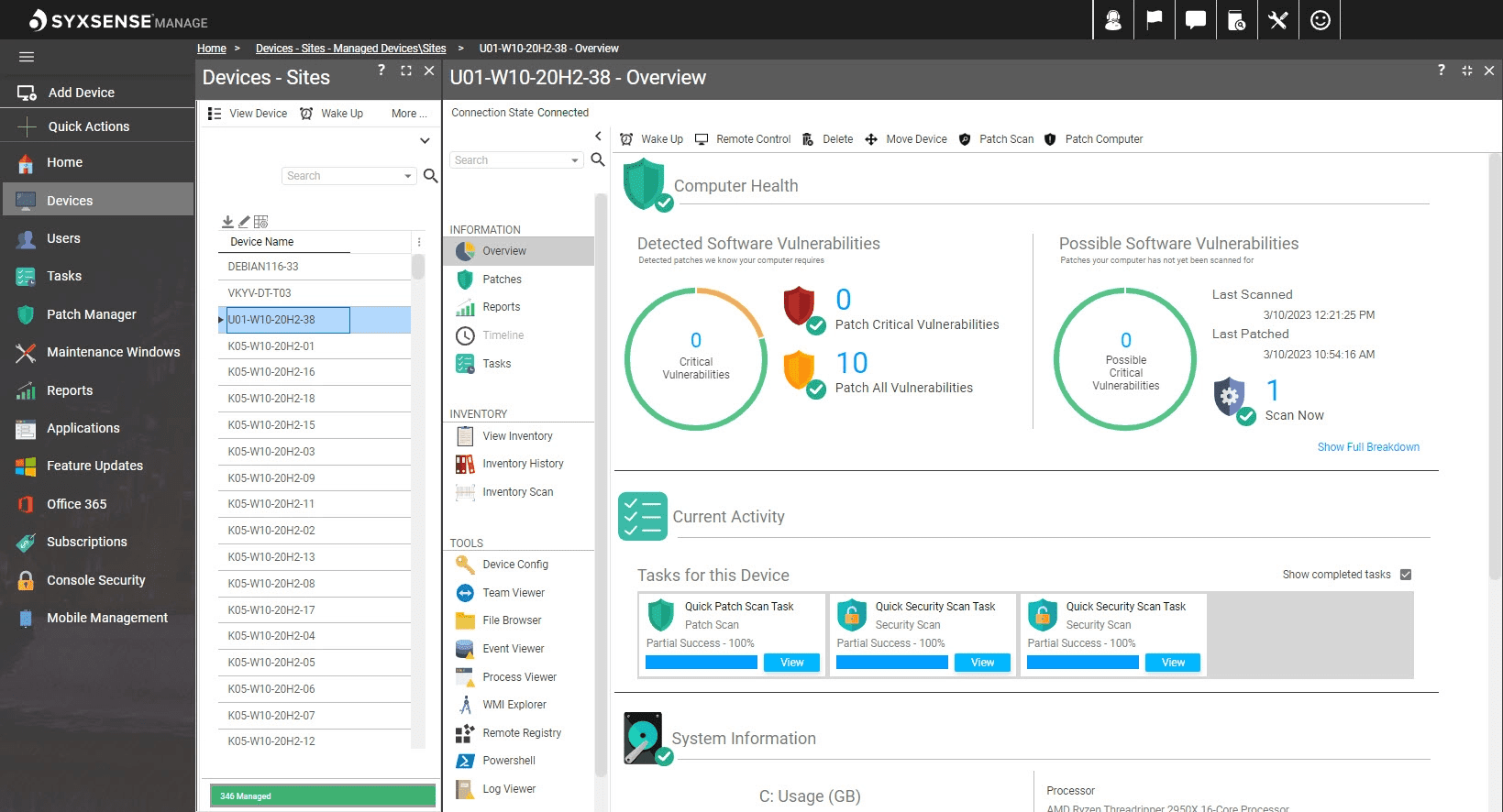 AI
AI
 AI
AI
 AI
AI
Syxsense Inc., the developer of a unified security and endpoint management suite, or USEM for short, is adding generative artificial intelligence capabilities to its product with an announcement today.
Cortex Copilot enables information technology and security administrators to simplify and speed up the process of creating endpoint management and security workflows by allowing them to use natural language queries to automate tasks and generate scripts.
USEM enables administrators to manage and secure endpoints such as personal computers, tablets, smartphones and internet of things devices from a single, centralized console. The technology can be used to provision and configure new devices; install, configure and remove applications; apply security policies, install patches; and troubleshoot problems remotely.
Cortex Copilot extends Syxsense’s existing Cortex no-code visual designer, which enables administrators to build complex automated workflows for hundreds of endpoint management and security tasks. The company said the new generative AI capabilities allow users to describe in natural language what task or workflow to create with the software generating code that can be dragged and dropped into the Cortex engine to execute.
Syxsense says its technology goes beyond the patching and updating that is common in user endpoint management tools to scan for vulnerabilities and alert administrators to the need for fixes. “You can tell us to identify all the Windows devices that have Microsoft Office of a particular version and don’t have a particular patch installed,” said Ashley Leonard, the company’s founder and chief executive officer. “You can deploy a patch to them, run a report to prove that the problem is now fixed and email that to the CIO. The system uses our prebuilt workflow engine to build out that workflow piece by piece automatically in front of you.”
Syxsense has long provided a library of prebuilt and tested workflow modules that can be dragged and dropped into a custom workflow. “The AI is doing that for you now,” he said. “It picks the right modules and brings them to you. If the task is something that we don’t have a prebuilt workflow for, then the system will use the AI to generate the script for you.”
The company also trained its machine learning engine on its data schemas, asset data and documentation, “so you can say you want to generate a script that deploys a piece of software to all the Windows devices in the New York office that have at least 300 megabytes of free disk space and have not been rebooted in the last two weeks,” Leonard said. “Because it knows the data and the schema, it can generate all of that and run it for you as well.”
The company said it intends to soon release Windows Modern Device Management to give administrators a zero-touch approach to device compliance and security. That means devices can be shipped directly to the user with the Syxsense Agent automatically installing the necessary software on the first login. After authenticating through Microsoft Corp.’s Azure Cloud, IT managers can gain centralized control and have access to Windows Machine Learning, SyncML and other Windows protocols for management functions.
The Newport Beach, California-based company primarily sells to midsized and large businesses and has customer installations managing more than 100,000 endpoints, Leonard said.
Support our open free content by sharing and engaging with our content and community.
Where Technology Leaders Connect, Share Intelligence & Create Opportunities
SiliconANGLE Media is a recognized leader in digital media innovation serving innovative audiences and brands, bringing together cutting-edge technology, influential content, strategic insights and real-time audience engagement. As the parent company of SiliconANGLE, theCUBE Network, theCUBE Research, CUBE365, theCUBE AI and theCUBE SuperStudios — such as those established in Silicon Valley and the New York Stock Exchange (NYSE) — SiliconANGLE Media operates at the intersection of media, technology, and AI. .
Founded by tech visionaries John Furrier and Dave Vellante, SiliconANGLE Media has built a powerful ecosystem of industry-leading digital media brands, with a reach of 15+ million elite tech professionals. The company’s new, proprietary theCUBE AI Video cloud is breaking ground in audience interaction, leveraging theCUBEai.com neural network to help technology companies make data-driven decisions and stay at the forefront of industry conversations.